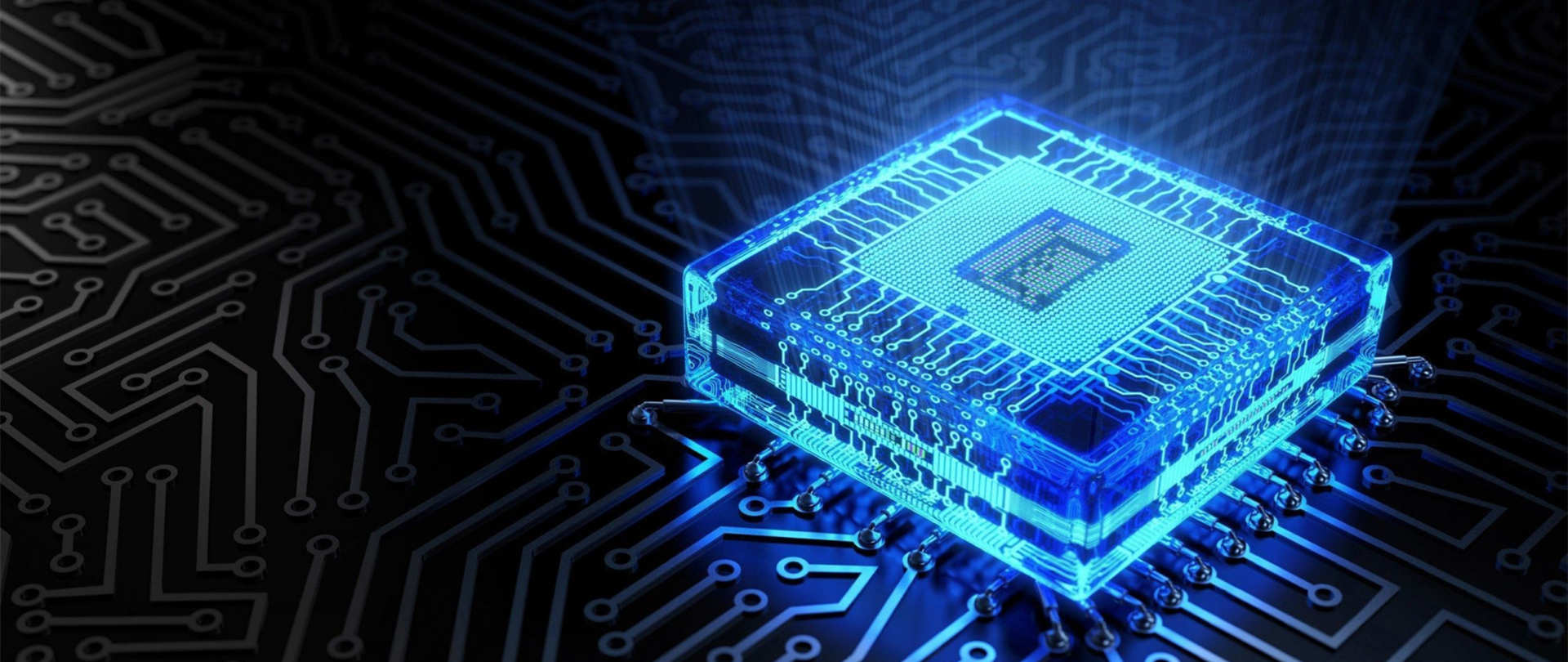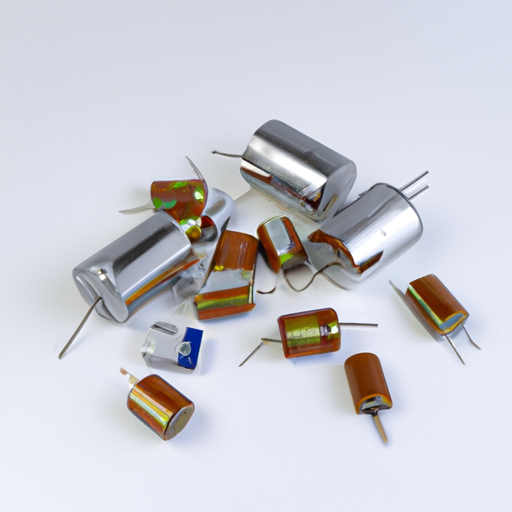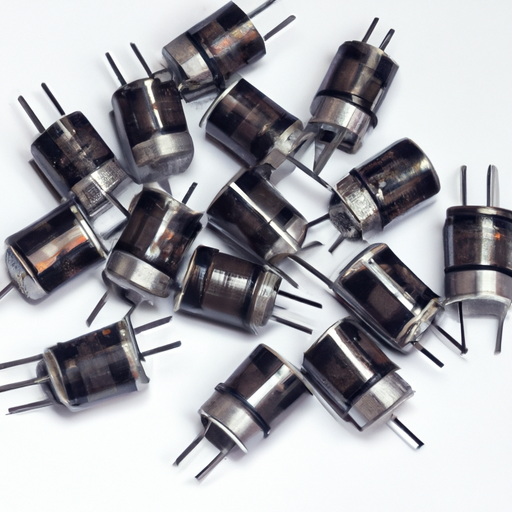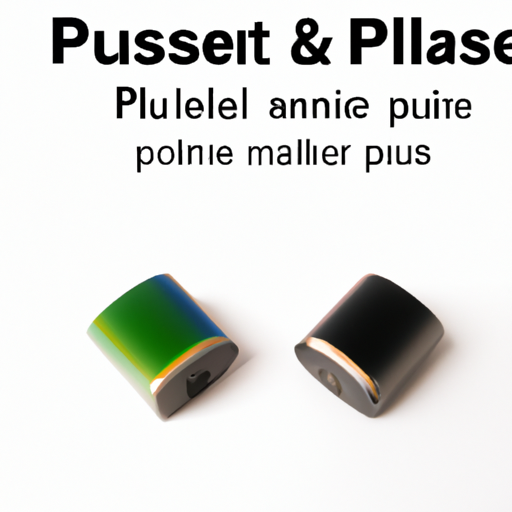CORE_COMPETENCE
Product_Leaders
index_more
index_more_content
info_item01
info_item_content01
info_item02
info_item_content02
info_item03
info_item_content03
info_item04
info_item_content04
NEWS
NEWS
What are the product features of overload capacitors?
What are the Product Features of Overload Capacitors?
I. Introduction
A. Definition of Overload Capacitors
Overload capacitors are specialized electrical components designed to manage excess voltage and current in electrical circuits. They play a crucial role in protecting electrical systems from damage caused by overload conditions, ensuring that devices operate safely and efficiently.
B. Importance of Overload Capacitors in Electrical Systems
In modern electrical systems, the reliability and longevity of equipment are paramount. Overload capacitors help mitigate risks associated with power surges, voltage spikes, and other electrical anomalies. By absorbing excess energy, they prevent potential failures and extend the lifespan of connected devices.
C. Purpose of the Article
This article aims to explore the key product features of overload capacitors, providing insights into their functionality, applications, and the critical factors to consider when selecting the right capacitor for specific needs.
II. Understanding Overload Capacitors
A. Basic Functionality
1. Role in Electrical Circuits
Overload capacitors serve as energy storage devices that can release or absorb electrical energy as needed. They stabilize voltage levels, filter out noise, and provide a buffer against sudden changes in electrical load.
2. Types of Overload Capacitors
There are several types of overload capacitors, including electrolytic, ceramic, and film capacitors. Each type has unique characteristics that make it suitable for specific applications.
B. Common Applications
1. Industrial Equipment
In industrial settings, overload capacitors are used in motors, transformers, and other heavy machinery to protect against voltage fluctuations and ensure smooth operation.
2. HVAC Systems
Heating, ventilation, and air conditioning (HVAC) systems rely on overload capacitors to maintain consistent performance and prevent damage from electrical surges.
3. Consumer Electronics
From televisions to computers, consumer electronics utilize overload capacitors to enhance performance and protect sensitive components from electrical disturbances.
III. Key Product Features of Overload Capacitors
A. Voltage Rating
1. Definition and Importance
The voltage rating of an overload capacitor indicates the maximum voltage the capacitor can handle without failing. It is a critical specification that ensures the capacitor can operate safely within the electrical system.
2. How to Choose the Right Voltage Rating
When selecting a capacitor, it is essential to choose one with a voltage rating higher than the maximum voltage expected in the application. This provides a safety margin and reduces the risk of failure.
B. Capacitance Value
1. Explanation of Capacitance
Capacitance is a measure of a capacitor's ability to store electrical energy. It is expressed in farads (F) and is a key factor in determining how effectively a capacitor can perform its functions.
2. Impact on Performance
The capacitance value affects the capacitor's ability to filter noise, stabilize voltage, and manage energy storage. Selecting the appropriate capacitance is crucial for optimal performance in specific applications.
C. Temperature Rating
1. Operating Temperature Range
The temperature rating indicates the range of temperatures within which the capacitor can operate effectively. It is essential to consider this rating to ensure reliability in varying environmental conditions.
2. Effects of Temperature on Performance
Extreme temperatures can impact a capacitor's performance, leading to reduced efficiency or failure. Understanding the temperature rating helps in selecting capacitors suitable for specific environments.
D. Tolerance Levels
1. Definition of Tolerance
Tolerance refers to the allowable variation in capacitance from the specified value. It is typically expressed as a percentage and indicates how much the actual capacitance can deviate from the nominal value.
2. Importance in Circuit Design
In circuit design, selecting capacitors with appropriate tolerance levels is crucial for ensuring consistent performance and reliability. Tight tolerance capacitors are often required in precision applications.
E. Physical Size and Form Factor
1. Common Sizes and Shapes
Overload capacitors come in various sizes and shapes, including cylindrical, rectangular, and surface-mount designs. The choice of form factor can impact installation and integration into existing systems.
2. Impact on Installation and Space Constraints
In many applications, space is limited. Understanding the physical size and form factor of overload capacitors is essential for ensuring they fit within the designated area without compromising performance.
F. Lifespan and Reliability
1. Expected Lifespan of Overload Capacitors
The lifespan of overload capacitors can vary significantly based on their type, usage, and environmental conditions. Manufacturers often provide estimated lifespans, which can range from several thousand to tens of thousands of hours.
2. Factors Affecting Reliability
Factors such as temperature, voltage stress, and frequency of operation can influence the reliability of overload capacitors. Selecting capacitors designed for specific conditions can enhance their longevity.
G. Self-Healing Properties
1. Explanation of Self-Healing Mechanism
Some overload capacitors, particularly film capacitors, possess self-healing properties. This means that if a small fault occurs, the capacitor can recover by isolating the damaged area, preventing complete failure.
2. Benefits in Overload Situations
Self-healing capacitors provide an added layer of protection in overload situations, enhancing reliability and reducing the risk of catastrophic failure.
H. Safety Features
1. Overvoltage Protection
Many overload capacitors are designed with built-in overvoltage protection mechanisms to prevent damage from voltage spikes.
2. Short-Circuit Protection
Short-circuit protection features help safeguard the capacitor and the connected circuit from damage caused by unexpected short circuits.
3. Thermal Protection
Thermal protection mechanisms monitor the temperature of the capacitor and can disconnect it from the circuit if it exceeds safe operating limits.
IV. Performance Characteristics
A. ESR (Equivalent Series Resistance)
1. Definition and Importance
Equivalent Series Resistance (ESR) is a measure of the resistance encountered by alternating current (AC) flowing through a capacitor. It is a critical parameter that affects the efficiency and performance of the capacitor.
2. Impact on Efficiency
Lower ESR values indicate better performance, as they result in less energy loss and heat generation during operation. Selecting capacitors with low ESR is essential for high-efficiency applications.
B. Ripple Current Rating
1. Explanation of Ripple Current
Ripple current refers to the AC component of the current flowing through a capacitor. It is crucial to consider this rating, especially in applications where capacitors are subjected to varying current loads.
2. Importance in AC Applications
In AC applications, selecting capacitors with appropriate ripple current ratings ensures they can handle the fluctuating currents without overheating or failing.
C. Frequency Response
1. How Frequency Affects Performance
The performance of overload capacitors can vary with frequency. Understanding how frequency impacts capacitance and impedance is essential for selecting the right capacitor for specific applications.
2. Applications Requiring Specific Frequency Response
Certain applications, such as audio equipment and RF circuits, require capacitors with specific frequency response characteristics to ensure optimal performance.
V. Quality Standards and Certifications
A. Industry Standards
1. IEC, UL, and Other Relevant Standards
Overload capacitors must comply with various industry standards, such as those set by the International Electrotechnical Commission (IEC) and Underwriters Laboratories (UL). Compliance ensures safety and reliability.
2. Importance of Compliance
Adhering to industry standards is crucial for manufacturers and users alike, as it guarantees that the capacitors meet specific performance and safety criteria.
B. Certification Processes
1. Testing and Quality Assurance
Manufacturers often undergo rigorous testing and quality assurance processes to ensure their overload capacitors meet industry standards and customer expectations.
2. Impact on Product Selection
When selecting overload capacitors, considering certifications and testing results can help ensure that the chosen components are reliable and safe for use in critical applications.
VI. Conclusion
A. Summary of Key Features
Overload capacitors are essential components in electrical systems, providing protection and stability. Key features such as voltage rating, capacitance value, temperature rating, and safety features play a significant role in their performance and reliability.
B. Importance of Selecting the Right Overload Capacitor
Choosing the right overload capacitor is crucial for ensuring the safety and efficiency of electrical systems. Understanding the various features and specifications can help users make informed decisions.
C. Future Trends in Overload Capacitor Technology
As technology advances, overload capacitors are likely to evolve, incorporating new materials and designs that enhance performance, reliability, and safety. Staying informed about these trends will be essential for users and manufacturers alike.
VII. References
A. List of Sources for Further Reading
1. "Capacitor Technology: A Comprehensive Guide" - Electronics Weekly
2. "Understanding Capacitors: Types, Applications, and Specifications" - IEEE Spectrum
3. "The Role of Capacitors in Electrical Systems" - Electrical Engineering Portal
B. Suggested Industry Publications and Standards
1. International Electrotechnical Commission (IEC) Standards
2. Underwriters Laboratories (UL) Certification Guidelines
3. Journal of Electrical Engineering and Technology
This comprehensive overview of overload capacitors highlights their critical features and applications, providing valuable insights for anyone involved in electrical engineering or related fields.
2024-11-23
0
What are the development trends of the high-voltage shunt capacitor industry?
Development Trends of the High-Voltage Shunt Capacitor Industry
I. Introduction
High-voltage shunt capacitors are essential components in electrical systems, playing a critical role in power factor correction, voltage stabilization, and energy efficiency. These capacitors are designed to operate at high voltages, typically above 1 kV, and are used in various applications, including transmission and distribution networks, industrial plants, and renewable energy systems. As the demand for reliable and efficient electrical systems continues to grow, understanding the development trends in the high-voltage shunt capacitor industry becomes increasingly important. This article explores the current and future trends shaping this dynamic industry.
II. Overview of the High-Voltage Shunt Capacitor Industry
A. Historical Context and Evolution
The high-voltage shunt capacitor industry has evolved significantly over the decades. Early applications of capacitors were primarily in power factor correction for industrial loads. As technological advancements emerged, the industry began to expand, driven by the increasing demand for electricity and the need for more efficient power systems. The introduction of new materials and manufacturing techniques has allowed for the development of capacitors that can withstand higher voltages and offer improved performance.
B. Key Players in the Market
The high-voltage shunt capacitor market is characterized by a mix of established manufacturers and emerging players. Major companies such as Siemens, Schneider Electric, and ABB dominate the market, holding significant shares due to their extensive product offerings and global reach. These companies invest heavily in research and development to innovate and improve their products, ensuring they remain competitive in a rapidly changing landscape.
III. Current Market Trends
A. Increasing Demand for Renewable Energy Sources
One of the most significant trends in the high-voltage shunt capacitor industry is the growing demand for renewable energy sources. As countries strive to reduce their carbon footprints and transition to cleaner energy, the integration of wind and solar power into the grid has become a priority. High-voltage shunt capacitors play a crucial role in these systems by providing reactive power support, improving voltage stability, and enhancing overall system reliability. Additionally, their integration with smart grid technologies allows for better management of energy resources and improved grid resilience.
B. Technological Advancements
Technological advancements are driving innovation in the high-voltage shunt capacitor industry. Manufacturers are exploring new materials, such as advanced polymers and ceramics, to enhance the performance and longevity of capacitors. Innovations in manufacturing processes, including automated production techniques and quality control measures, are also contributing to the development of more efficient and reliable capacitor designs. These advancements not only improve the performance of high-voltage shunt capacitors but also reduce production costs, making them more accessible to a broader range of applications.
C. Regulatory and Environmental Considerations
As environmental concerns continue to rise, regulatory frameworks are becoming increasingly stringent. Compliance with international standards, such as IEC and IEEE, is essential for manufacturers to ensure their products meet safety and performance requirements. Additionally, environmental regulations are influencing production practices, pushing companies to adopt more sustainable methods. This includes reducing waste, minimizing energy consumption during manufacturing, and exploring eco-friendly materials for capacitor production.
IV. Future Development Trends
A. Growth of Electric Vehicles (EVs) and Their Impact on the Industry
The rise of electric vehicles (EVs) presents a significant opportunity for the high-voltage shunt capacitor industry. As the demand for EVs increases, so does the need for robust charging infrastructure. High-voltage shunt capacitors are essential in this context, providing the necessary reactive power support to ensure efficient charging and grid stability. Furthermore, the potential for integrating shunt capacitors with energy storage systems, such as batteries, can enhance the overall performance of EV charging stations, making them more efficient and reliable.
B. Smart Grid and IoT Integration
The integration of high-voltage shunt capacitors into smart grid applications is another trend shaping the future of the industry. Smart grids leverage advanced technologies, including the Internet of Things (IoT), to optimize energy distribution and consumption. High-voltage shunt capacitors can play a vital role in this ecosystem by providing real-time data analytics and monitoring capabilities. This allows for improved performance, predictive maintenance, and enhanced decision-making processes, ultimately leading to a more efficient and resilient energy system.
C. Sustainability and Eco-Friendly Practices
Sustainability is becoming a central focus for the high-voltage shunt capacitor industry. Manufacturers are increasingly shifting towards biodegradable and recyclable materials to reduce their environmental impact. Additionally, energy-efficient manufacturing processes are being adopted to minimize energy consumption and waste generation. This trend not only aligns with global sustainability goals but also appeals to environmentally conscious consumers and businesses.
V. Challenges Facing the Industry
A. Supply Chain Disruptions
The high-voltage shunt capacitor industry is not immune to supply chain disruptions, which can significantly impact production and delivery timelines. Global events, such as the COVID-19 pandemic, have highlighted vulnerabilities in supply chains, leading to shortages of raw materials and components. To mitigate these risks, companies are exploring strategies such as diversifying suppliers, investing in local production, and enhancing inventory management practices.
B. Competition from Alternative Technologies
As the demand for power factor correction solutions grows, the high-voltage shunt capacitor industry faces competition from alternative technologies, such as synchronous condensers and static VAR compensators. These technologies offer similar benefits but may be more suitable for specific applications. To maintain market positioning, manufacturers must differentiate their products through innovation, performance, and cost-effectiveness.
C. Technological Obsolescence
The rapid pace of technological change poses a challenge for the high-voltage shunt capacitor industry. Keeping pace with advancements in materials, manufacturing processes, and application requirements is essential for manufacturers to remain competitive. Investing in research and development is crucial to ensure that companies can adapt to changing market demands and technological trends.
VI. Conclusion
In summary, the high-voltage shunt capacitor industry is experiencing significant development trends driven by increasing demand for renewable energy, technological advancements, and regulatory considerations. The growth of electric vehicles, smart grid integration, and sustainability initiatives are shaping the future of the industry. However, challenges such as supply chain disruptions, competition from alternative technologies, and technological obsolescence must be addressed to ensure continued growth and innovation.
As the industry evolves, the importance of innovation and adaptation cannot be overstated. Companies that embrace change and invest in research and development will be well-positioned to thrive in this dynamic market. The future of the high-voltage shunt capacitor industry is bright, with opportunities for growth and advancement on the horizon.
VII. References
1. International Electrotechnical Commission (IEC) Standards
2. Institute of Electrical and Electronics Engineers (IEEE) Publications
3. Market Research Reports on High-Voltage Shunt Capacitors
4. Industry Journals and Articles on Renewable Energy and Smart Grids
5. Environmental Regulations and Compliance Guidelines
This blog post provides a comprehensive overview of the development trends in the high-voltage shunt capacitor industry, highlighting the importance of innovation and adaptation in a rapidly changing market.
2024-11-22
0
What is the purchase price of the latest pulse capacitor?
What is the Purchase Price of the Latest Pulse Capacitor?
I. Introduction
Pulse capacitors are specialized components designed to store and release electrical energy in short bursts, making them essential in various high-performance applications. These capacitors are crucial in fields ranging from medical equipment to telecommunications, where precise energy delivery is paramount. This article aims to explore the purchase price of the latest pulse capacitors, examining the factors that influence their cost, current market trends, and where to buy them.
II. Understanding Pulse Capacitors
A. What are Pulse Capacitors?
Pulse capacitors are designed to handle rapid charge and discharge cycles, which distinguishes them from standard capacitors. They are engineered to withstand high voltage and current levels, making them suitable for applications that require quick energy delivery.
1. Technical Specifications
Pulse capacitors are characterized by their voltage ratings, capacitance values, and energy density. They often feature low equivalent series resistance (ESR) and high ripple current ratings, which are critical for performance in demanding environments.
2. Types of Pulse Capacitors
There are several types of pulse capacitors, including ceramic, film, and electrolytic capacitors. Each type has unique properties that make it suitable for specific applications. For instance, ceramic capacitors are often used in high-frequency applications, while film capacitors are preferred for their stability and reliability.
B. Applications of Pulse Capacitors
Pulse capacitors find applications in various industries:
1. Medical Equipment
In medical devices, pulse capacitors are used in defibrillators and imaging equipment, where precise energy delivery is crucial for patient safety and diagnostic accuracy.
2. Telecommunications
In telecommunications, pulse capacitors are integral to signal processing and transmission systems, ensuring that data is transmitted efficiently and without distortion.
3. Industrial Machinery
Industrial machinery often relies on pulse capacitors for motor drives and power supplies, where they help manage energy flow and improve system efficiency.
4. Automotive Systems
In the automotive sector, pulse capacitors are used in electric vehicles and advanced driver-assistance systems (ADAS), where they support rapid energy demands and enhance performance.
III. Factors Influencing the Purchase Price of Pulse Capacitors
Several factors contribute to the purchase price of pulse capacitors, making it essential for buyers to understand these elements.
A. Material Composition
1. Dielectric Materials
The type of dielectric material used in a pulse capacitor significantly affects its performance and cost. High-quality materials, such as polypropylene or ceramic, tend to be more expensive but offer better performance characteristics.
2. Conductive Materials
The choice of conductive materials also impacts the price. Capacitors made with high-purity metals, such as silver or gold, will generally be more costly than those using standard aluminum or copper.
B. Manufacturing Processes
1. Production Techniques
The manufacturing process can influence the cost of pulse capacitors. Advanced production techniques, such as automated assembly and precision machining, can increase costs but also enhance quality and reliability.
2. Quality Control Standards
Manufacturers that adhere to stringent quality control standards may charge higher prices due to the additional testing and certification processes involved.
C. Size and Specifications
1. Voltage Ratings
Higher voltage ratings typically lead to increased costs, as the materials and design must accommodate the greater electrical stress.
2. Capacitance Values
Capacitance values also play a role in pricing. Capacitors with higher capacitance values are generally more expensive due to the larger size and more complex manufacturing processes required.
D. Brand Reputation
1. Established Manufacturers vs. New Entrants
Brand reputation can significantly influence pricing. Established manufacturers with a history of reliability and performance may charge a premium compared to newer entrants in the market.
2. Warranty and Support Services
The level of warranty and customer support offered can also affect the price. Manufacturers that provide extensive support and longer warranties may charge more for their products.
IV. Current Market Trends
A. Overview of the Pulse Capacitor Market
The pulse capacitor market has seen steady growth due to increasing demand in various sectors, particularly in renewable energy and electric vehicles. As technology advances, the need for more efficient and reliable capacitors continues to rise.
B. Recent Innovations and Technological Advancements
Recent innovations in materials and manufacturing processes have led to the development of more efficient pulse capacitors. These advancements often come with a higher price tag but offer improved performance and longevity.
C. Impact of Global Supply Chain Issues
Global supply chain disruptions, particularly in the wake of the COVID-19 pandemic, have affected the availability and pricing of electronic components, including pulse capacitors. Manufacturers may face increased costs for raw materials, which can be passed on to consumers.
D. Price Fluctuations Due to Demand and Supply
The pulse capacitor market is subject to price fluctuations based on demand and supply dynamics. As industries ramp up production and new technologies emerge, prices may rise or fall accordingly.
V. Price Ranges for the Latest Pulse Capacitors
A. Entry-Level Pulse Capacitors
Entry-level pulse capacitors typically range from $1 to $10. These capacitors are suitable for basic applications and are often used in consumer electronics.
B. Mid-Range Options
Mid-range pulse capacitors can cost between $10 and $50. These are often used in more demanding applications, such as telecommunications and industrial machinery.
C. High-End Pulse Capacitors
High-end pulse capacitors can range from $50 to several hundred dollars, depending on their specifications and performance characteristics. These capacitors are commonly used in critical applications, such as medical devices and advanced automotive systems.
D. Comparison of Prices from Different Manufacturers
Prices can vary significantly between manufacturers. It is advisable for buyers to compare prices and specifications from multiple sources to ensure they are getting the best value for their investment.
VI. Where to Purchase Pulse Capacitors
A. Online Retailers
1. Major E-commerce Platforms
Websites like Amazon and eBay offer a wide range of pulse capacitors, making it easy for consumers to compare prices and specifications.
2. Specialized Electronics Suppliers
Specialized electronics suppliers, such as Digi-Key and Mouser, provide a more extensive selection of pulse capacitors, often with detailed specifications and technical support.
B. Physical Electronics Stores
Local electronics stores may carry pulse capacitors, but their selection may be limited compared to online options.
C. Direct from Manufacturers
Purchasing directly from manufacturers can sometimes yield better prices, especially for bulk orders. Many manufacturers offer online catalogs and direct sales options.
D. Considerations for Bulk Purchases
For businesses or individuals needing large quantities, bulk purchasing can lead to significant savings. It is essential to negotiate prices and inquire about discounts for larger orders.
VII. Conclusion
In summary, the purchase price of the latest pulse capacitors is influenced by various factors, including material composition, manufacturing processes, size, specifications, and brand reputation. Understanding these elements can help buyers make informed purchasing decisions. As the market continues to evolve, staying abreast of current trends and innovations will be crucial for those looking to invest in pulse capacitors.
VIII. References
- Citing relevant studies and market reports on pulse capacitors.
- Listing manufacturer websites and product catalogs for further exploration.
- Additional resources for further reading on pulse capacitor technology and applications.
By understanding the complexities of pricing in this specialized field, consumers can navigate the market more effectively and choose the right pulse capacitors for their needs.
2024-11-21
0

























